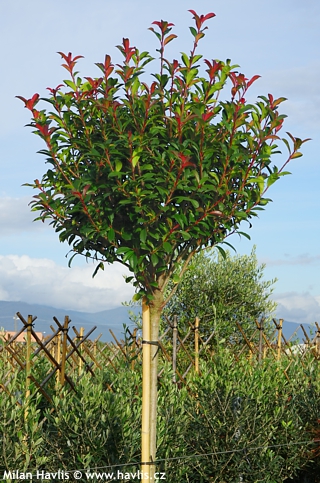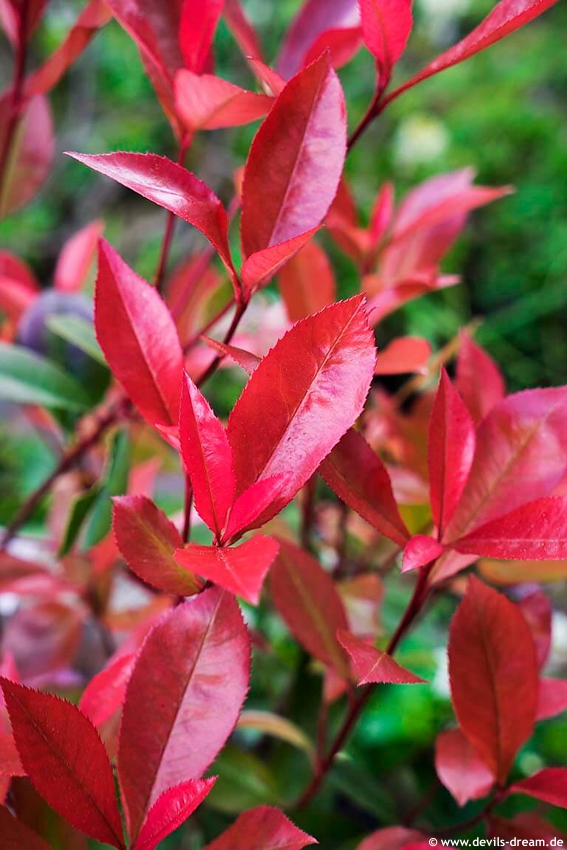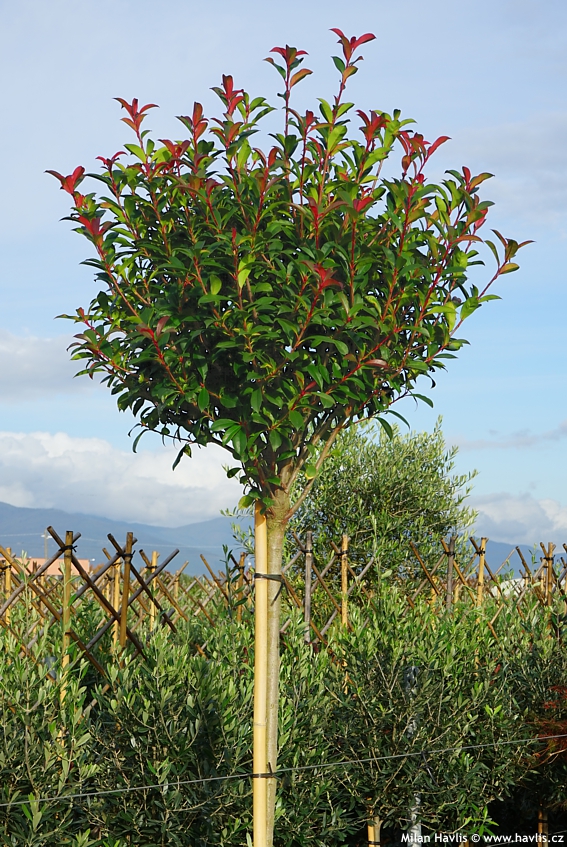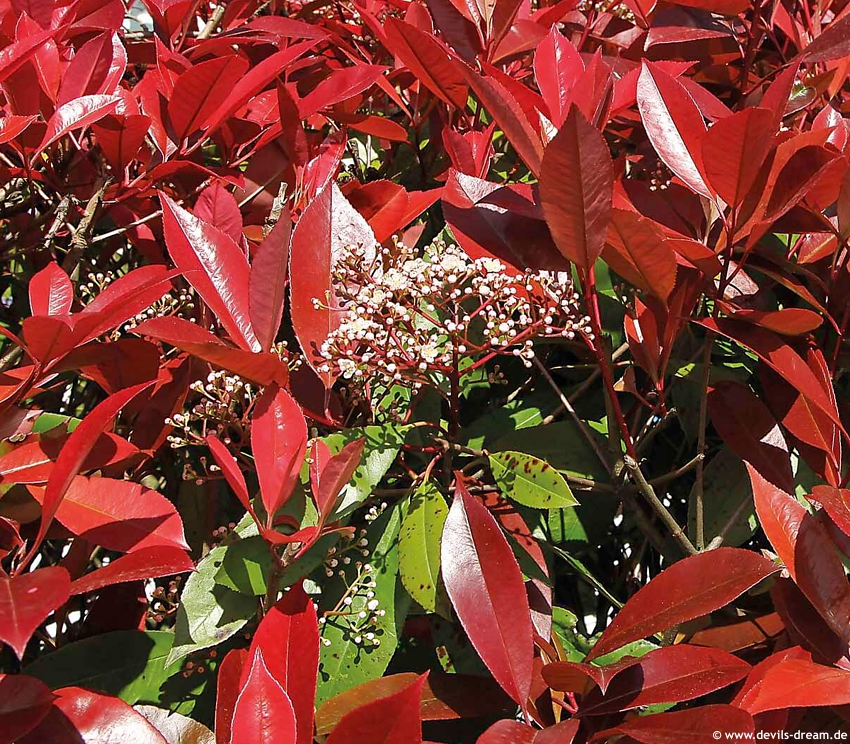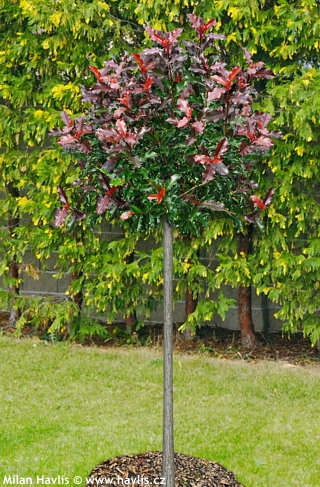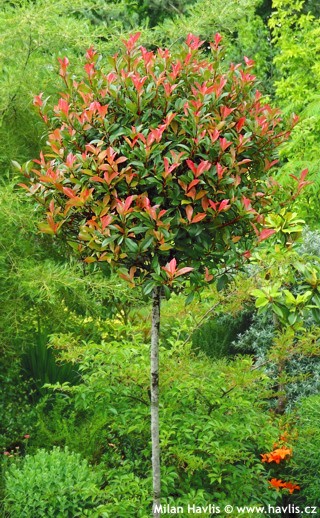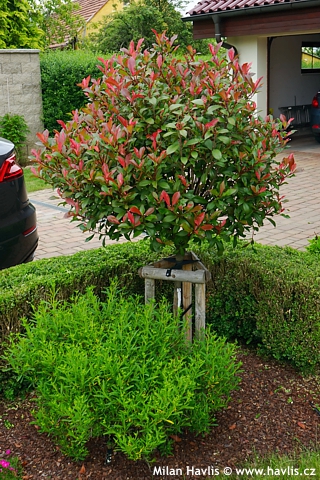Photinia x fraseri 'DEVIL'S DREAM' Fraser's photinia - STANDARD TREE
size/type
small tree,small tree
usual height
2-4m
usual width
1-1,5m
leaves
evergreen broadleaf
colour of leaves
flowers
less showy but noticeable
colour of flowers
blooming time
April
location
full to partial sun
soil type
any (acidic to alkaline)
soil moisture requirements
evenly moist but well-drained
USDA zone (lowest)
7 (down to -23°C)
winter protection
for zone 5+6

for zone 7

categorized
Photinia
Fraser’s photinia is an evergreen shrub or a tree, a cross between Japanese photinia glabra and Chinese photinia serratifolia. It was found in American town Birmingham in Alabama in 1943 and introduced to commerce some 15 years later named Birmingham. For some reason this name was soon dropped, and USA was flooded with millions of plants of super attractive Fraser's photinia. Originally it was used as lush specimen evergreen shrub but soon after it became possibly the most common evergreen hedging shrub of the south, and as it was trialled far north it reached states in USDA zone 7 and even 6 where its distribution stopped.Description of the plant:
Devil’s Dream is a German variety of Fraser’s photinia bred and selected by Manfred Behrens in his nursery in Bad Zwischenahn located in the middle of a famous nursery region Ammerland. With so many photinias in the market today I would use comparison with two bestsellers to describe it best. It is halfway between large-leaved Red Robin and small-leaved and compact Mandarino (Carré Rouge). Devil’s Dream has a more upright and denser habit than the first variety, and slightly larger leaves than the latter. Those are evergreen, broadly elliptic, glossy, emerge bright burgundy red and mature to dark green in summer. In mid spring medium-sized panicles of creamy white flowers are produced on older plants. Red coloured leaves emerge at least twice a year, sometimes three times if the season is warm and long. Tree forms of evergreen woody plants are becoming more and more popular. They can offer good screening at a desirable height blocking views from neighbouring windows if privacy is why you look for an evergreen tree. Pruning, trimming, or clipping can be done almost anytime from spring till midsummer. It readily regenerates also from old wood which makes this red-leaved jewel indestructible. As every standard tree it needs a good support to protect the stem from moving, especially in wind. It can be removed after 3 years if the tree is established well. There is usually a bamboo stick attached to the tree trunk when you buy the plant. It needs to be removed before you tie the stem into your new support.
Fraser's photinia is not very fussy about soil type, it only hates waterlogged and compacted ground. For best results grow it in moist but well-drained, humus-rich, acid soil for best foliage colour. In order to retain moisture and to keep the ground from temperature swings in winter, keep it mulched all year round, especially during the first 1-2 years after transplanting. Photinia is quite drought tolerant when fully established but might suffer during dry winters of zone 6 so an extra watering is advisable once a month in frost-free periods if the ground is dry and not frozen. It is reliably hardy to -24°C without damage and has withstood a few degrees lower with some damage of previous year's growths and foliage but always regenerated from healthy wood.
Last update 15-12-2021
WANT TO TRY A SIMILAR PLANT?

































